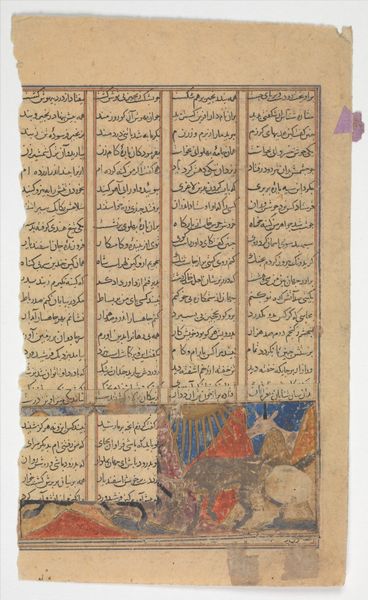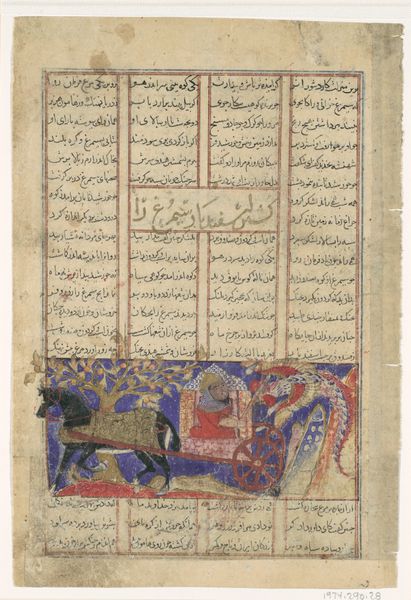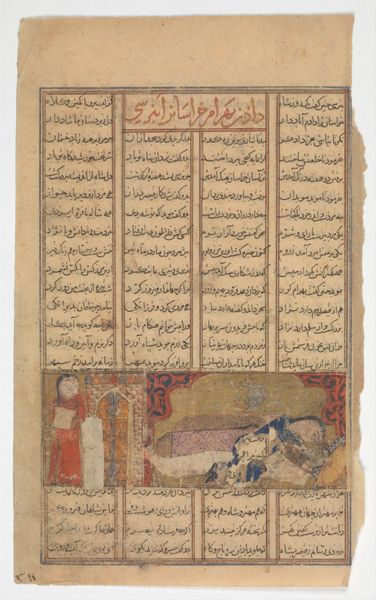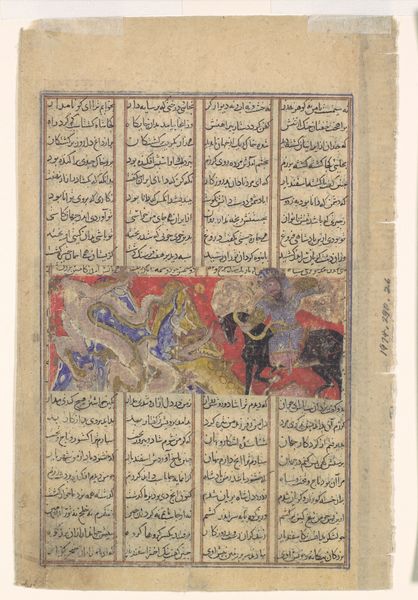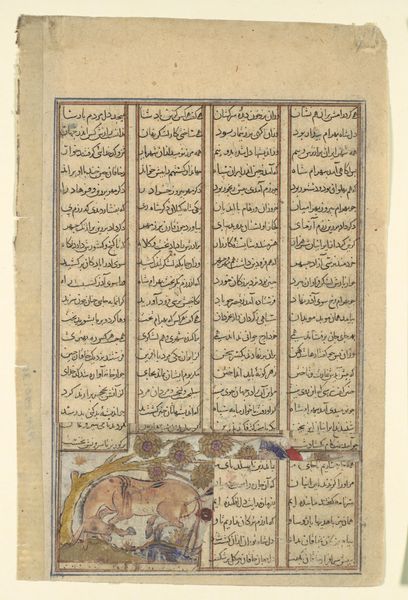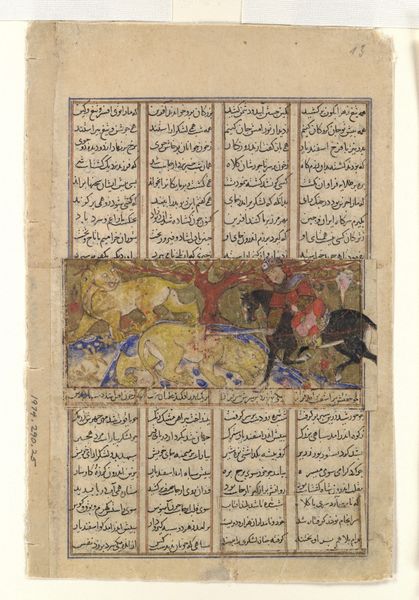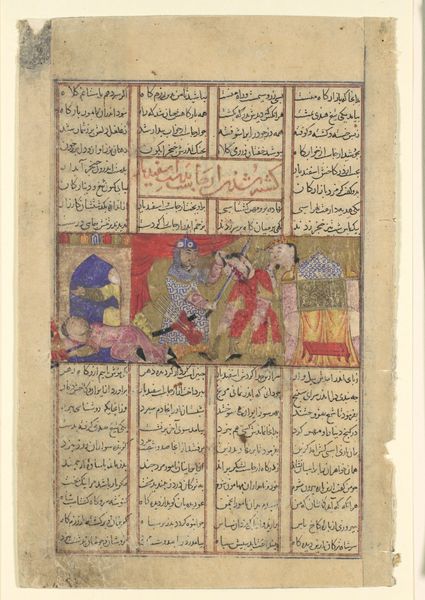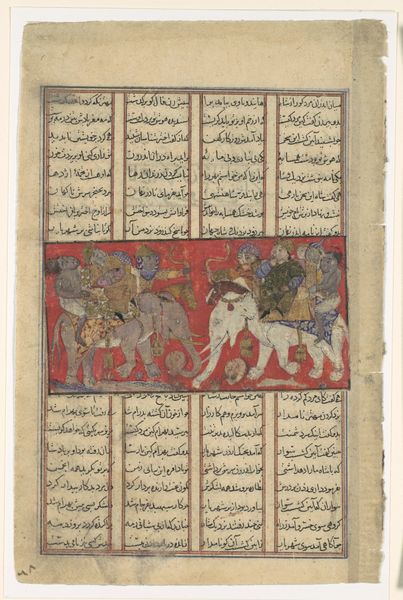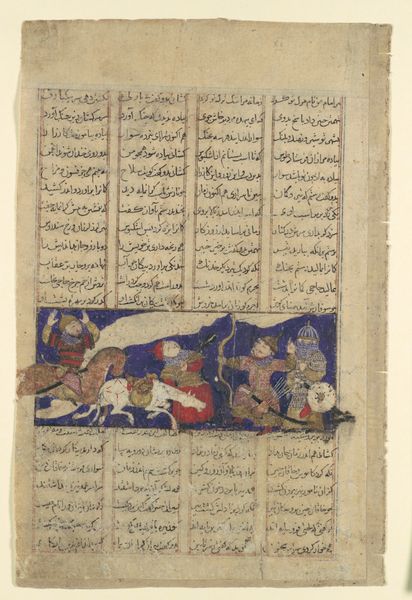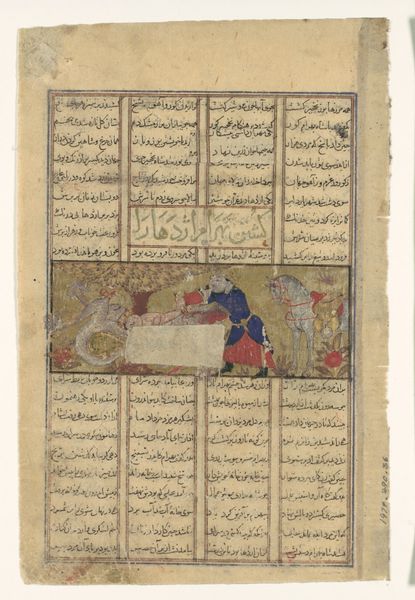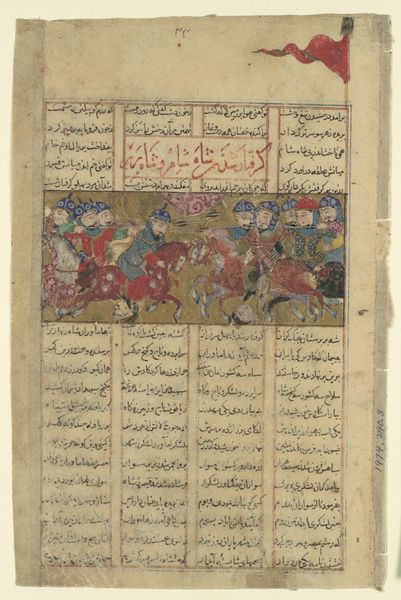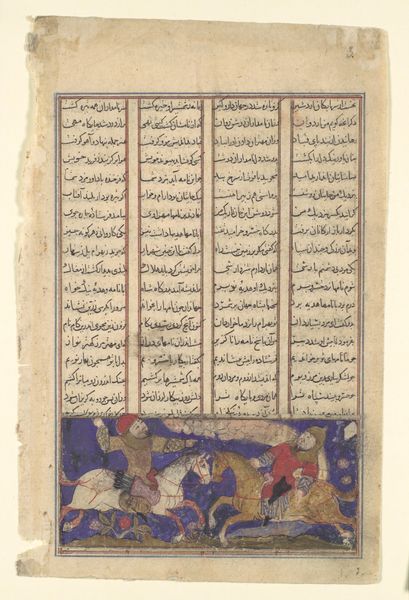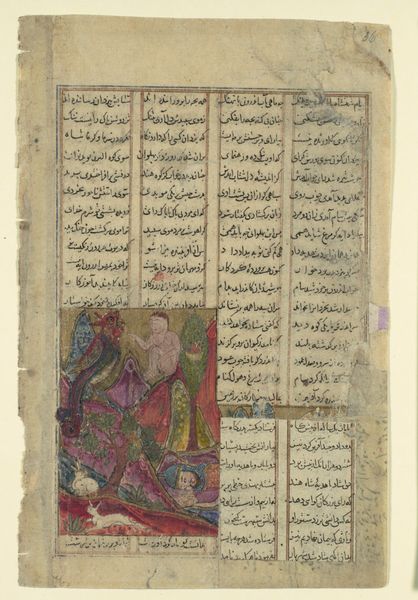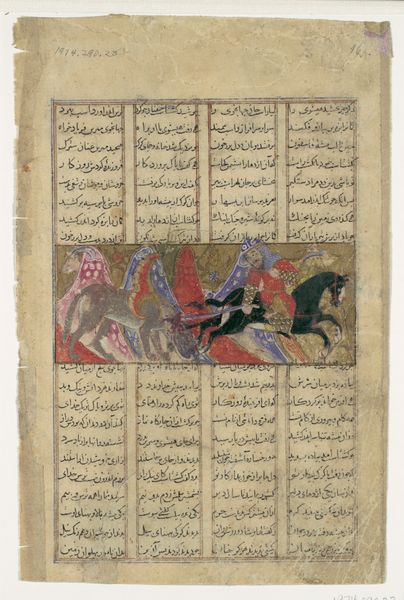
"Rustam Shoots Isfandiyar in the Eye", Folio from a Shahnama (Book of Kings) 1305 - 1365
0:00
0:00
painting, watercolor
#
narrative-art
#
painting
#
figuration
#
watercolor
#
coloured pencil
#
horse
#
men
#
islamic-art
#
miniature
Dimensions: H. 1 3/4 in. (4.4 cm) W. 2 in. (5.1 cm)
Copyright: Public Domain
Curator: Today, we're looking at "Rustam Shoots Isfandiyar in the Eye," a folio from a Shahnama, or Book of Kings, created sometime between 1305 and 1365. It’s currently held at the Metropolitan Museum of Art. Editor: Immediately striking is its intense energy. It’s a compact scene, dominated by rearing horses and the focused figures of the two warriors in this dramatic clash. There's something both chaotic and deliberate in its composition. Curator: Absolutely. The piece employs watercolor, ink, and gold on paper to vividly portray this pivotal moment from Persian mythology. Rustam, on the left, is about to strike Isfandiyar, a seemingly invincible warrior. Editor: Invincible, eh? The psychological weight of that looming defeat—the piercing gaze, the subtle tension in the horse’s posture... It speaks volumes about vulnerability even in the mightiest of heroes. It is so rich in symbolism. Curator: Yes, Islamic miniatures often depict narratives fraught with moral complexities. Note the highly stylized landscape; those trees and flowering bushes add an otherworldly element to the narrative. This creates an immersive context. Editor: I am drawn to how color informs emotional reading. The warm, earthy tones surrounding Rustam against the cooler blues and purples behind Isfandiyar. It’s like a visual representation of opposing forces—passion against a certain destiny. Curator: A brilliant observation. The use of colour underscores their symbolic roles, amplifying the tragedy of their confrontation. Their narrative highlights how even the greatest are bound by fate. Editor: I appreciate how our contemporary understanding can still benefit from examining timeless cultural motifs like honour, loyalty, and inevitability—encoded so eloquently in forms like this. Curator: Indeed. Its enduring appeal arises, I believe, from its visual execution and also, more subtly, from those larger themes, deeply embedded, to ensure the piece stays relevant across generations.
Comments
No comments
Be the first to comment and join the conversation on the ultimate creative platform.
